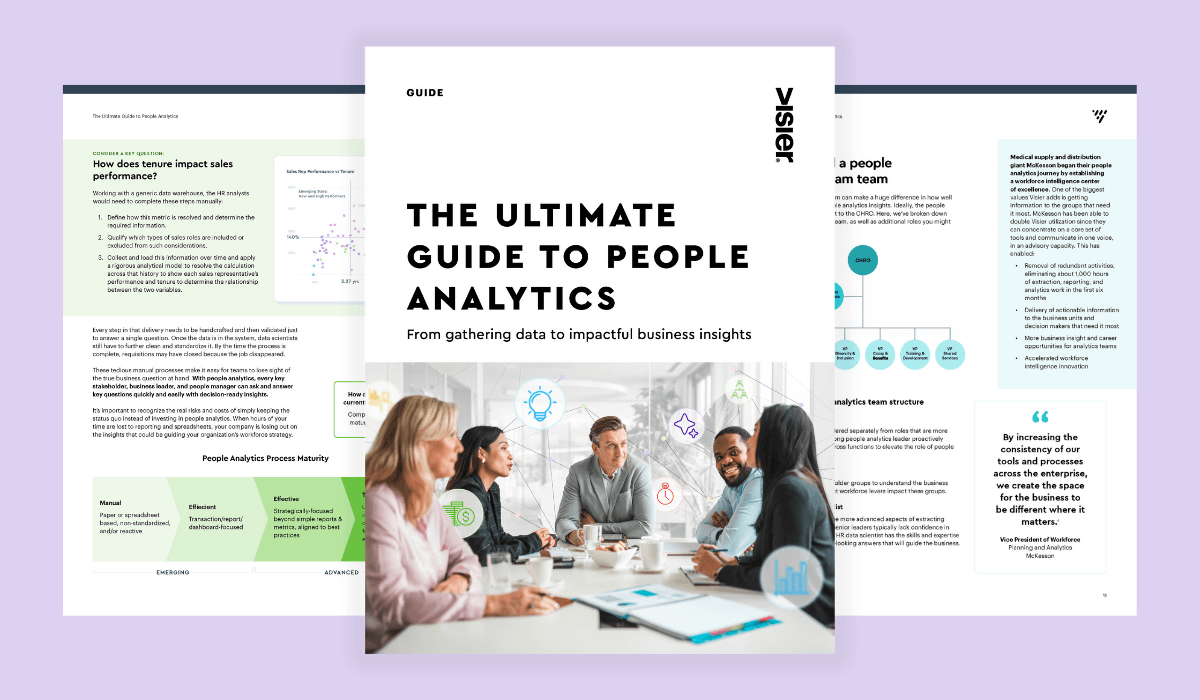How to Use People Analytics to Overcome Singapore’s Top Workforce Challenges
Discover how HR leaders can use people analytics to address Singapore's top workforce challenges, from talent gaps to effectively boosting employee engagement. Read more.

HR leaders in Singapore face unprecedented challenges—from persistent talent shortages to managing the complexities of a hybrid work environment. A recent report by Visier and People Matters surveyed over 100 organizations in Singapore, uncovering how they are grappling with these issues and increasingly turning to people analytics to make strategic, data-driven decisions.

Closing the talent gap
The talent gap is now the leading concern for HR professionals, with 72% of organizations reporting difficulties in hiring and 67% struggling with high turnover rates. Clearly, traditional recruitment methods alone are no longer sufficient to address labor shortages in an increasingly competitive market.
Companies are moving beyond conventional strategies like exit interviews and salary adjustments. Instead, they’re focusing on building talent pipelines, offering referral bonuses, and implementing more proactive approaches to retain employees. But even with these improvements, retention remains a significant issue. A data-driven approach that combines resignation trends with workforce culture insights can reveal the true reasons behind high turnover, offering opportunities for improvement.
In one of my previous roles, we used exit interview data combined with employee feedback from focus groups to identify what made staff stay. By adjusting our recruiting profiles and hiring tactics, we managed to increase average employee retention from just under three years to nearly four—a 24% improvement.
The growing demand for people analytics
Despite its potential, people analytics is still in its early stages in Singapore, with many organizations slow to adopt it. Over 63% of companies cite budget constraints, while 62% struggle with poor data quality and limited analytical capabilities. Moreover, many HR leaders still view analytics as a tool for generating reports and dashboards, rather than a powerful method for diagnosing problems and driving solutions.
To unlock the full potential of people analytics, organizations need to invest in improving data quality and integrating analytics into their overall business strategy. Only then can HR become a true strategic partner, capable of making informed decisions that lead to better performance and a stronger workforce.
During a panel session, we discussed this issue in depth. The consensus was that organizations need a combination of training on analytics tools, hands-on HR experience, and practical problem-solving approaches to elevate their analytics capabilities. For example, I’ve worked with companies to identify the profiles of salespeople who consistently outperform their peers. In another case, we used analytics to calculate the ROI of training programs aimed at improving quality and reducing costs—a simple yet impactful way to showcase the value of people analytics.
Over 63% of companies in Singapore cite budget constraints as a barrier to adopting people analytics
Tackling employee engagement with data
Employee engagement continues to be a critical issue, with over 50% of organizations naming it a significant challenge. Yet, many businesses are still prioritizing operational improvements over employee experience, despite the clear benefits that come from using people analytics to enhance engagement.
By taking a data-driven approach, HR leaders can address underlying issues such as career development, management relationships, and workplace culture. Personalizing employee experiences based on analytics insights can help retain top talent and boost overall engagement.
For instance, I’ve linked employee engagement data with customer satisfaction and retention metrics, which directly impact revenue and profitability. By connecting HR and marketing metrics, we were able to pinpoint which areas of engagement to focus on, resulting in higher customer retention and, ultimately, increased profitability.
More than 50% of organizations cite employee engagement as a significant challenge
Navigating hybrid work and career mobility
The rise of hybrid work models has introduced new challenges in managing productivity and engagement. Over 55% of organizations report significant difficulties in managing hybrid teams, while career mobility remains underdeveloped in many businesses, leaving employees with limited opportunities for internal growth.
To tackle this, organizations need to rethink their approach to career development. Offering clear career paths and supporting internal mobility is key, and data can be instrumental in understanding employee aspirations and skill gaps. By doing so, companies can create tailored development programs that align with both business goals and individual ambitions.
In one organization I led, we analyzed promotion rates for employees at the lowest levels of the company, comparing them with expectations for when workers believed they should be promoted. We discovered that once employees passed their expected promotion window, the likelihood of quitting increased by 50% after the first year and more than 70% after two years. Armed with this information, we adjusted promotion criteria and introduced additional mentoring and training, which helped reduce attrition.
Over 55% of organizations report significant difficulties in managing hybrid teams
Leveraging people analytics to overcome workforce challenges
Navigating these workforce challenges requires a commitment to fully embracing people analytics as a core HR practice. By investing in data quality, building analytics capabilities, and aligning HR strategies with business goals, organizations can create a sustainable competitive advantage.
HR leaders who leverage people analytics not only address today’s pressing workforce issues but also position their organizations for long-term success. It’s time for Singaporean companies to step up and use data to make smarter, more impactful people decisions.



